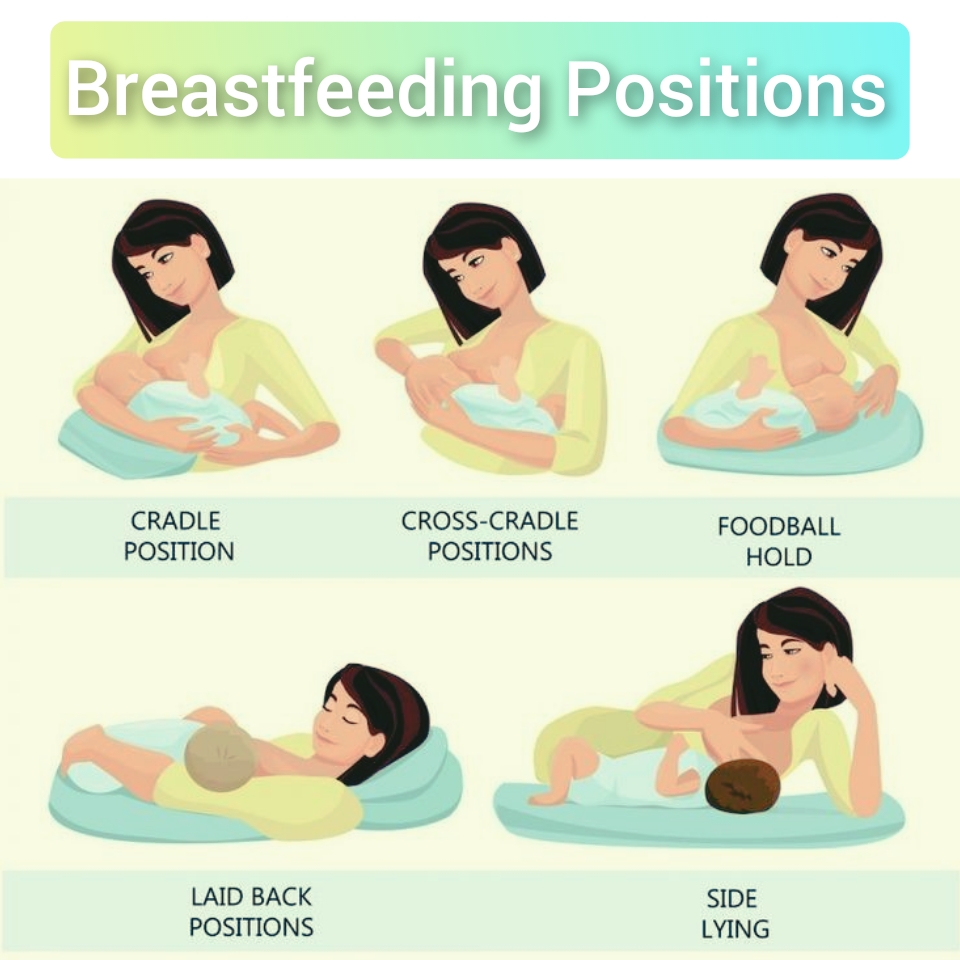One of the best things a mother could do for her child is to try breastfeeding. Breastfeeding should be initiated as soon as possible or within 1 hour of child birth. To avoid issues while feeding, Mother must follow comfortable breastfeeding positions, for ease of mother as well as baby. Reflexes helping in breastfeeding.
Mother
Milk secretion reflex by hormone prolactin
Milk ejection reflex by hormone oxytocin
Baby
Rooting reflex: The rooting reflex allows a newborn baby to find your breast or a bottle to begin feeding. You can also trigger the reflex by stroking or gently touching the corner of a baby’s mouth. A baby will then reflexively turn their head to follow and “root” in that direction.
sucking reflex: These reflexes are involuntary movements that happen either spontaneously or as responses to different actions. The sucking reflex, for example, happens when the roof of a baby’s mouth is touched. The baby will begin to suck when this area is stimulated, which helps with nursing or bottle feeding.
How to latch properly

Hold your breast with one hand, support baby with other. Bring baby close enough so it can find your areola without effort. Stimulate baby’s upper lip with your nipple until it’s mouth open very wide. Your baby’s chin should be the first thing that make contact with your breast. They must be latched deeper below your nipple than above. Baby’s lip must be completely turned out and wrapped firmly against your areola. Make sure baby’s nostrils are clear from obstructions and they can breathe easily.
Signs of good attachment while breastfeeding:
- Mouth of the baby should be wide open
- Entire areola should be in the baby’s mouth except a small upper part that may be visible
- Lower lip of the baby should be everted that is turned out
- Chin of the baby should touch the Mother’s breast.
6 Comfortable Breastfeeding Positions
With this journey comes figuring out the best positions for breastfeeding newborns, adjusting to feeding schedules, and trying to maintain nursing through the most important news. Luckily, there are many different positions to discover and try with your baby.

1. Cradle Position
Being one of the most popular holds, this position requires your baby’s head to be rested in the bend of your elbow on the side you’re choosing to breastfeed on.
The hand on that same side will be used to support the rest of your baby’s body.
Help your baby latch by placing your nipple between your thumb and first finger (just above the areola) and pointing it slightly toward your baby’s nose.
Baby is now ready to latch on.
Once properly latched, use your other arm and hand for cradled support.
2. Cross Cradle Position
The cross-cradle hold is ideal for early breast-feeding. Sit up straight in a comfortable chair with armrests. Bring your baby across the front of your body, tummy to tummy. Hold your baby in the crook of the arm opposite the breast you’re feeding from — left arm for right breast, right arm for left.
3. Football Hold
Coming in as one of the second most used holds, the football hold resembles exactly what its title suggests.
In this position, your baby will be placed at the side you plan to nurse on with their body facing you and legs tucked under your arm.
Use the hand from that same side to support your baby’s head while using the other hand to help your baby latch (like the cradle hold).
This position is really beneficial if you’ve had a C-section, a small baby, large breasts, or twins.
4. Laid Back Position
Laid-back breastfeeding is where you use a comfortable, reclined position to feed your baby. It’s really a relaxed approach where breastfeeding is seen as a relationship between you and your baby, with no need to follow a series of instructions.
5. Side-Lying Position
The side-lying position is perfect for breastfeeding new-borns who will be co-sleeping.
Since you are already lying in bed, no need to get up. Make sure you and your baby are both lying on your sides with your tummies facing one another.
Use your open hand (from the side you’re not laying on) to help your baby latch.
6. Dangle Position
This type of feeding style is widely used to help decrease clogged milk ducts and conditions like mastitis.
For this position you’ll want to lay your baby on their back and you crouch over them on all fours to literally dangle the nipple in their mouth.
Some moms have also said this position comes in handy for times with latching seems to be more difficult.
Signs of good positioning while breastfeeding
- Body of the baby should be well supported.
- Occiput, shoulder and buttocks should be in the same line.
- Baby should be turned towards the mother.
- Abdomen of the baby should touch abdomen of mother.
Contraindications to breastfeeding
Related to Baby
Galactosemia, lactose intolerance
Related to Mother
Absolute contraindications include mother on chemotherapy or radiotherapy.
Relative contraindications are maternal HIV, maternal active untreated TB(Tuberculosis), maternal active varicella, maternal active herpes simplex, breast abscess

Very beautifully explained ☺️ thank you Dr. Rabiya
Thank You So Much!
Very helpful and important thanx doctor
You are most welcome!